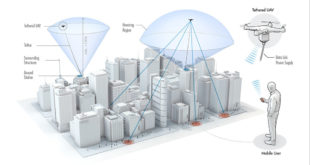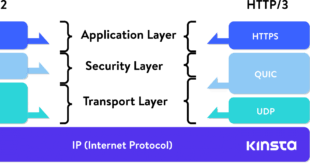Unmanned Aerial Vehicles, abbreviated as UAVs, are aircrafts without any human pilot onboard, mainly controlled and managed remotely or via embedded autonomous computer programs. UAVs are also popularly known as drones. Unique features of UAVs pertaining to high mobility in three-dimensional space, autonomous operation, flexible deployment tend to find appealing …
Read More »Internet becoming secure and faster through QUIC, the new transport protocol set to replace TCP and HTTP/3
As the Military and civilian technological systems, from fighter aircraft to networked household appliances, are becoming ever more dependent upon internet, they are also becoming more vulnerable to hackers and electronic intruders. Electronic system security has become an increasingly critical area of concern for the DoD and the broader U.S. …
Read More »Entangling atomic clocks on orbiting satellites, will enable ultra accurate Global atomic clock network and distributing secret keys
The development of precise atomic clocks plays an increasingly important role in modern society. Shared timing information constitutes a key resource for navigation with a direct correspondence between timing accuracy and precision in applications such as the Global Positioning System. Atomic clocks are one of the most accurate time …
Read More »5G testbeds for developing and testing new 5G technologies and 5G military applications
Mobile communications systems have evolved through wireless technology innovation into 2G, 3G, and then 4G to keep pace with ever increasing voice and data traffic. 5G, short for 5th generation mobile networking or 5th generation wireless systems is the latest iteration of cellular technology that will provide seamless coverage, high …
Read More »DARPA’s MIDAS developing Digital Phased-Arrays at Millimeter Wave technology for fiber-optic-class 100 Gb/s communications for airborne data links
Expanded mission areas and the implementation of additional data routing resulting from future warfighting capabilities place more demand on data distribution services in the form of higher data bandwidths and reduced latencies. These demands require improvements in Radio Frequency (RF) spectrum utilization and advances in antenna technologies. Digital array antenna …
Read More »New UAV command and control technologies, satellite BLOS links and Multi-Domain Multi-Platform Drone Control
Unmanned Aerial Vehicle (UAV) is defined as a powered, aerial vehicle that does not carry a human operator, uses aerodynamic forces to provide vehicle lift, can fly autonomously or be piloted remotely, can be expendable or recoverable, and can carry a lethal or nonlethal payload. Unmanned aerial vehicles (UAVs) are …
Read More »Quantum repeater technology breakthroughs pave the way for Quantum internet—the quantum version of the current Internet
Quantum encryption using single photons is a promising technique for boosting the security of communication systems and data networks, but there are challenges in applying the method over large distances due to transmission losses. Currently Most Quantum Communication links are direct point-to-point links through telecom optical fibers and, ultimately limited to …
Read More »Countries race to develop terabit per second optical fiber networks for 5G, fiber-to-the-home (FTTH) and data center interconnect (DCI) cloud services.
One of the biggest challenges for 5G and last mile 10 Gig deployments is not raw data speeds, but middle mile and core networks. Currently, top speeds for core networks are between 200 Gbps and 400 Gbps, depending on the carrier and day of the week. Optical systems with advent …
Read More »Military “Internet of Things” require Robust Communication and Network technologies
There is great potential for IoT technologies to revolutionize modern warfare, leveraging data and automation to deliver greater lethality and survivability to the warfighter while reducing cost and increasing efficiency. Analogous to IoT, Military internet of things (MIOT) comprising multitude of platforms, ranging from ships to aircraft to ground vehicles …
Read More »Militaries employing UAV swarms under Network Centric Electronic Warfare concept to counter A2/AD environment
All modern forces depend on unimpeded access to, and use of, the EM spectrum in conducting military operations. Therefore, there is a requirement to gain and maintain an advantage in the electromagnetic spectrum by countering adversary’s systems and protecting one’s own systems. Electronic Warfare has become now a means to …
Read More » International Defense Security & Technology Your trusted Source for News, Research and Analysis
International Defense Security & Technology Your trusted Source for News, Research and Analysis









